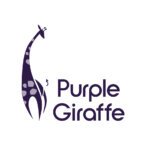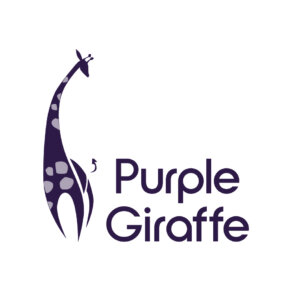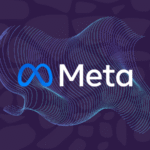As the social media space continues to evolve, so does Meta.
Earlier this year, we saw Meta remove thousands of ad targeting topics that were deemed sensitive, redundant with others or too granular. We look to unpack these recent changes to audience targeting and what that means for you and your business in today’s social sphere.
Whether you are currently running Facebook ads, want to incorporate more paid ad targeting within your business, or are interested in learning more about paid campaigns, this could directly affect you.
As of January 19th, we saw the rollout begin of the removal of the following targeting options in Meta’s Ads Manager:
- Health, including select awareness, prevention, and treatment-related topics
- Religious beliefs
- Sexual orientations
- Political affiliations
- Race and ethnicity
They also provided examples for these, which included keywords such as ‘World Diabetes Day’, ‘Jewish Holidays’ and ‘Catholic Church’. This isn’t the only change to occur. As of March 17th, Meta’s newest social advertising update will roll out which will see a range of Detailed Targeting options in Ads Manager updated or removed.
So why is this happening?
Prior to this change, Facebook ads were targeted through interests, demographics, behaviour connections and locations. This means ads could be targeted very specifically based on information gathered by Facebook.
However, some users felt their privacy was being violated. Facebook has had various lawsuits and disputes regarding their targeting options in the past, and due to growing user complaints regarding their personal safety, they decided to remove these options.
This shift began back in 2018, when the General Data Protection Regulation was created, which technically disallowed Facebook to target people in Europe without their individual consent. Although they originally protested this, Facebook eventually allowed the changes.
Over the past few years, they have faced more backlash over the lack of regulation regarding targeting and in late 2021, Facebook announced the new options. Meta has shared a couple of reasons for why they’re phasing out these audience selections. For one, the platform plans to remove underused audiences because they’re too nuanced or too similar to other common options.
But motives for eliminating the other topics are more complex. Essentially, Meta has attempted to balance advertisers’ ability to target highly personal interests with users’ expectations of what advertisers know about them. In consultation with policymakers and civil rights experts, Meta determined that targeting options in the categories listed above are too sensitive for advertisers to target or take advantage of.
So how does this affect you and your business?
This change will negatively impact cause-based marketers, not for profit, political parties, healthcare companies, and many more directly.
Due to these targeting changes, some of your paid campaigns relating to these topics or branching areas may not reach your audience. It is easy to dismiss this change as only affecting advertisers who are within super niche areas. But even if you are advertising to saved audiences, you can still be affected by the change.
It is a good idea to review your current, planned ad sets to ensure they aren’t negatively affected as the rollout finalises on 17th March 2022 and will be permanent.
Even if you are not actively advertising within these parameters, it can also impact your brand messaging and values, and your marketing angle may need to be changed to still push these values to target audiences.
How does this affect current campaigns?
If you don’t update affected ad sets before 17th March, Ads Manager will modify them automatically. Here’s how you can expect that to look:
- If you included one of these prohibited topics in your targeting, then Ads Manager will automatically remove it and update delivery accordingly. The platform may recommend alternatives to help you reach the right people.
- If you excluded one of these topics, Ads Manager will pause affected ad sets. You’ll need to update and republish them manually to ensure they meet the new requirements.
However, editing active campaigns may become tricky, especially if you need to modify an ad set that uses one of the outdated targeting options. Through 17th March, Ads Manager will allow edits at the campaign level (such as budget changes) without requiring you to comply with the new targeting guidelines.
But if you want to make ad set–level edits, Ads Manager will require you to update your detailed targeting to comply with the new guidelines before publishing changes to the ad set. The same rule applies to paused ad sets that you intend to resume after 19th January. You can expect Ads Manager to prompt you to update your detailed targeting before relaunching the ad set.
If you don’t update affected ad sets before 17th March, Ads Manager will modify them automatically.
It’s easy to dismiss detailed targeting as a tool that’s exclusive to interest-based audiences. If you aren’t actively creating or advertising to any saved audiences, then you might assume that your campaigns won’t be affected. However, these updates may have a much bigger impact than you might think. After all, you can add detailed targeting options at the ad set level, no matter what type of audience you choose.
That means these targeting updates may potentially affect any type of Facebook advertising audience, including custom and lookalike targeting. To make sure your ad sets won’t be negatively affected, it’s a good idea to review both active and planned ad sets sooner rather than later—certainly before 17th March.
Whether you spend a little or a lot of your paid social budget on Facebook, it is in your best interest to monitor Meta’s audience targeting updates closely. The platform has suggested that in 2022, it may give users more options for controlling the ads they see, so you may need to continue experimenting with ways to reach your target audience successfully.
So, what’s next?
There is no real way to ‘get around’ this new change, as Facebook says they will be reviewing it early next year and by then it could be too late for affected businesses.
However, what can be done is finding other similar interests or ‘lookalike audiences’, which can prove to be difficult if you already have solid targeting options that have worked in the past. However, it is one way around the update.
This can be done by using much broader targeting regarding age, gender and location. Facebook has stated that they will be providing alternatives to current targeting specifications if they see fit.
If you need any assistance with these recent and upcoming changes or how to navigate the paid social media advertising space, feel free to contact us today.







